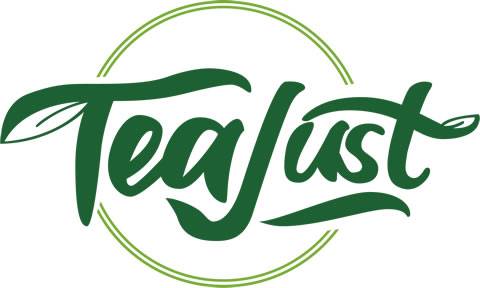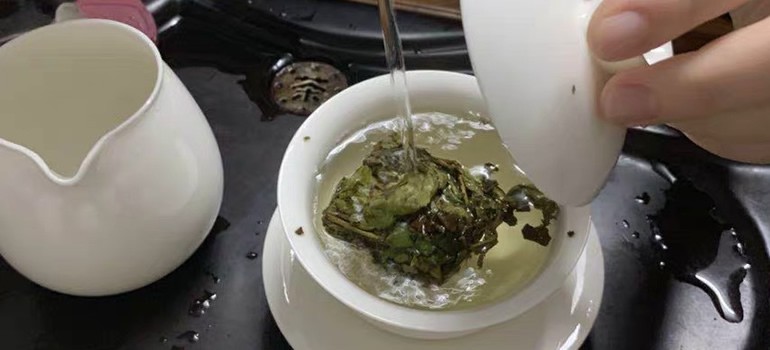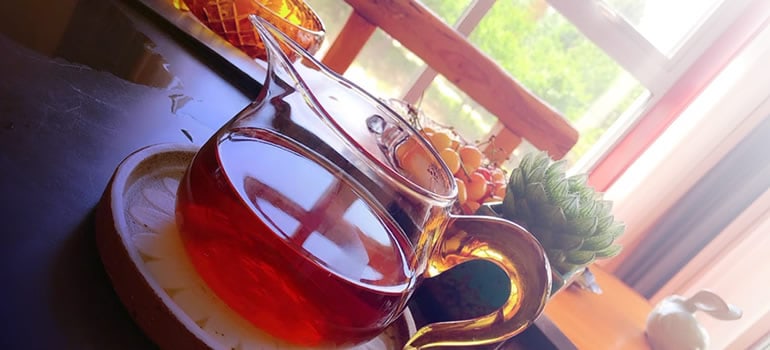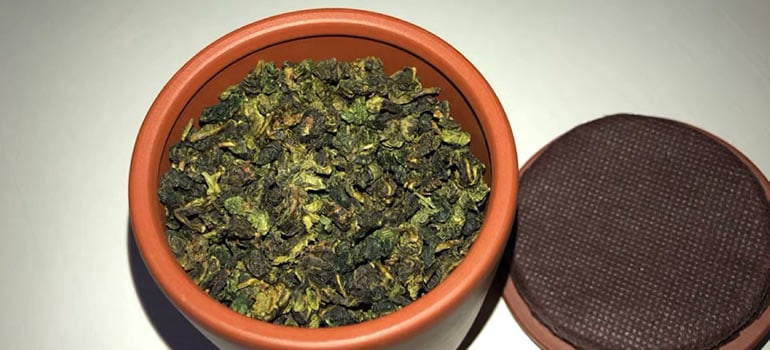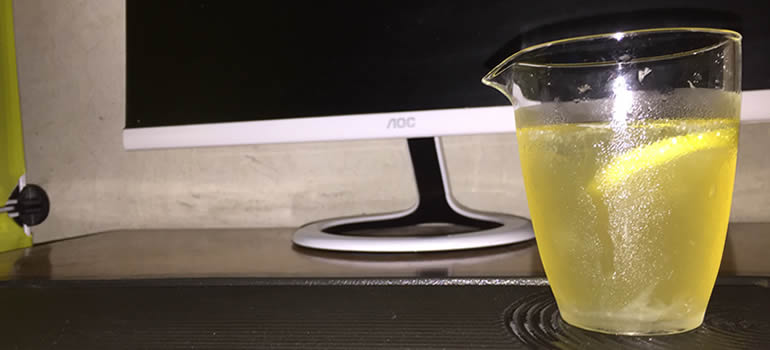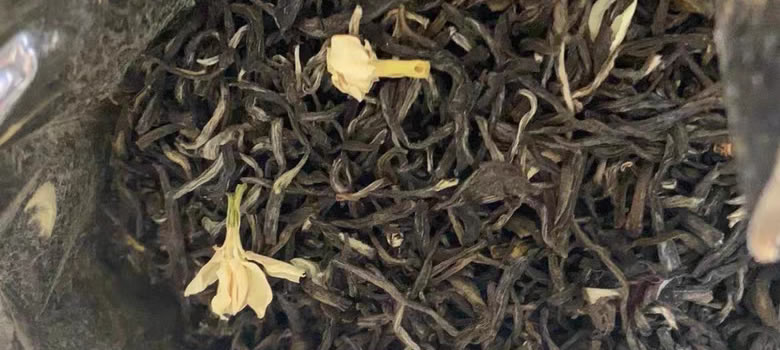
Xiang Pian tea is a popular type of tea that can be found in many restaurants and shops. In fact, it may easily be one of the top teas worth buying and tasting when eating at a Chinese restaurant.
However, if you have never heard of Xiang Pian tea, then you may have one question in mind, namely, “What is Xiang Pian tea?”
Xiang Pian tea, also known as flower-smoked tea or fragrant flower tea, is a tea that has been infused with flowers three or more times. Xiang Pian tea usually refers to jasmine-scented green tea that has a very rich, noble, and delicate flavor and aroma.
As you can see now, Xiang Pian tea is an interesting tea blend, so to speak, that is very different and unique to what you would find in many places. Continue reading below for more detailed information and tips.
What Is Xiang Pian Tea?
What makes Xiang Pian tea со unique is the preparation process.
During the production, high-quality, commercial-grade tea leaves are infused several times—at least three and as much as nine times—with fresh flowers.
This method of preparing tea is also known as a tea infusion or tea blending. And the chances are you have already heard of many different and trendy tea blends like Earl Gray, English Breakfast, Darjeeling, and so much more.
What happens during tea blending is that different types of tea are combined or layered before being compressed. As the name suggests, the purpose of blending is to combine the unique flavors and aromas of different teas.
As you can already guess, this allows for a huge variety of different tea combinations and mixtures in different ratios. The ratio between the different ingredients in any tea blend is paramount. The same ratios are always followed because the tea blend should always provide the consumer with the same taste and aroma qualities.
Just imagine what it would be like if you bought some English Breakfast tea every time you got a different-tasting tea—it wouldn’t be much of an English Breakfast, now, would it? It would be just a random mishmash of tea leaves.
This is why tea blends are always prepared the same way, and so is the case with Xiang Pian tea. But then again, you may have noticed that I said a tea blend is a mixture of two teas, and jasmine is not exactly a type of tea, is it?
Here’s the thing.
There are many different ways tea blending can work. And depending on how that is done, you can end with very nifty tea blends.
Xiang Pian is essentially a scented tea. Scented tea is a tea that has been blended with flowers.
However, those should not be confused with blooming teas as the flowers are not used for beautifying tea.
Not all Xiang Pian tea is created the same. The real Xiang Pian, as you now know, has flowers blended right into the tea leaves. But there are also other, cheaper, variations where instead of Jasmine flowers, Jasmine-based perfumes, essential oils, and aromas may have been used instead.
Although the tea leaves that have been used as a base may be of good quality, the lack of real flowers will affect the tea’s properties, in terms of taste, aroma, and health benefits. (And let’s not forget that those chemical-based scents may not exactly be considered healthy.)
Usually, real Xiang Pian tea can be easily discerned by the fact that it will contain real flowers in it, which will open up when the tea is steeped in hot water.
On the other hand, cheaply made, artificially scented Xiang Pian teas may not have these flowers and will lose their jasmine aroma after the first steeping.
What Kind of Tea Leaves Are Used for Xiang Pian Tea?
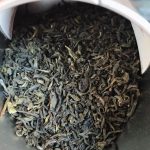
The tea leaves used for Xiang Pian are usually of very high quality.
Ordinarily, green tea leaves are used—with the baked dark green tea ranking number one, but other tea varieties like oolong tea, black tea, and white tea can also be used.
With that being said, Xiang Pian tea is always loose-leaf tea. So you should not be able to find Xiang Pian tea bags.
What Flowers Are Used for Xiang Pian Tea?
The most commonly used type of flower for the production of Xiang Pian tea is jasmine. The most famous tea is the Bai Yun Xiang Pian, also known as white cloud jasmine tea, and the Mo Li Xiang Pian.
Although jasmine flowers are often used as visual decoration primarily in blooming teas, its very mild flavor can be successfully blended with almost any type of tea. It can also be used as a color accent.
However, other varieties of flowers can be used like osmanthus, gardenia, rose, lotus, and chrysanthemum.
What Color Is Xiang Pian Tea?
The color of the Xiang Pian tea will depend on the type of tea and the flowers that have been used for its production. For example:
- Jasmine-scented green tea usually has a very mild, pale yellow or golden color, but it can also vary between pale to dark green.
- Rose-scented black tea (another popular variation) has a pleasant deep red color to it.
- Oolong tea (usually used in combination with osmanthus) color will vary depending on the variety of the tea. It can range from mild gold to orange and even brown in some instances.
What Is the Aroma of Xiang Pian Tea?
The aroma of the traditional Xiang Pian tea—jasmine-scented green tea—is oftentimes described as very noble and unsullied, long-lasting, very pleasant, and refreshing.
The reason why the aroma is so delicate and, at the same time, so long-lasting (even after a few steeps) is because of the unique preparation methods.
Jasmine blooms between spring and fall. It blossoms open up during the early hours of the night and releases its unique perfume during the night.
This is when jasmine buds are collected, just as they are about to open up in the early night. Then the jasmine buds are mixed with green tea leaves. After the jasmine buds have withered and lost their scent, they are removed.
This is considered one infusion, and, as mentioned earlier, this process is repeated at least several times.
What Is the Taste of Xiang Pian Tea?
The taste of Xiang Pian tea is very delicate and mild.
The green tea used as a base gives Xiang Pian tea a very nutty, sweet to bittersweet, vegetal taste. Some green teas can be slightly more fruity and floral.
The jasmine has a very mild, somewhat sweet, but primarily neutral taste that in no way overtakes the green tea’s natural flavor; yet, jasmine is very fragrant.
The taste of black tea, on the other hand, is a lot more full-bodied and darker, almost malt-like.
Oolong teas, on the other hand, can vary a lot. Oolong tea is oxidized at different levels, which produces different flavors. It can range from very light, floral, and sweet to very deep and full-bodied.
Because of the unique infusion process during the tea’s production, the taste and aroma are long-lasting. This allows Xiang Pian tea to be reused multiple times without losing its flavor and fragrance as fast as other types of tea.
How to Prepare Xiang Pian Tea
Make sure to use only high-quality Xiang Pian tea blends. This will ensure that you receive the best experience.
- Heat water between 175°F to 200°F (80°C to 95°C). Do not use boiling water. If you have no choice, leave the water aside for a minute to cool before using it, or add a little cold water to it.
- If you are using a teapot, make sure to warm it up a little with some hot water. Pour in a little hot water and give it a few swirls after which pour out the water.
- Add 1 to 1.5 teaspoons of Xiang Pian tea for every standard 8 oz cup of water.
- Add the hot water, cover the pot or teacup, and let it steep for 2 to 3 minutes. You do not want to over-steep the tea as it can go bitter and more astringent if left for too long.
- When ready, strain the tea into a teacup and serve.
For any subsequent steeping, add between 30 to 180 seconds to the steeping time.
Alternatively, you can also cold brew Xiang Pian tea by using the following method.
- Add the tea to a pitcher full of room-temperature water. Use 1 to 1.5 teaspoons of Xiang Pian tea per standard 8 oz cup of water.
- Cover the tea pitcher and leave the tea to steep in the cold water for up to 6 to 8 hours. If refrigerated, you can extend the cold brewing method for up to 12 hours.
- Pour the tea into a cup using a strainer.
- You can add ice cubes according to your liking if you want to turn them into an iced Xiang Pian tea.
To sweeten Xiang Pian tea, you can add brown sugar, honey, or pure cane syrup. All of which will dissolve in hot water. The syrup can be used after the cold brewing method has been finished, as it can also dissolve in cool water.
Remember to not add any sweeteners if you will be storing your tea in the fridge. Sugar, honey, syrup, or milk, will all make your tea spoil faster. Do not add any syrup during the cold brewing process for the same reason. Only add any additional ingredients before consuming your Xiang Pian tea.
While preparing your tea, it is best to use clean filtered water for the best results.
Can You Prepare Xiang Pian Tea From Scratch?
Xiang Pian tea, as you now know, undergoes a very detailed and step-by-step process of preparation that makes it almost impractical for an individual to prepare small amounts of it for daily consumption.
What makes the preparation of Xiang Pian tea from scratch extra difficult is that very rarely are the ingredients sold separately. It is true, you can find green tea leaves, but a lot of people may find it difficult to find jasmine flowers.
However, if you can find jasmine, you can simply add it to your green tea leaves. It will produce less flavorful and fragrant tea, but it can work.
How to Store Xiang Pian Tea?
To store your tea, all that is needed to do is simply keep it, once opened, in an airtight, opaque container. Keep the container in a dark and dry place. Avoid exposing the tea to humidity and strong odors.
The shelf life of tea will vary depending on the type of packaging used and the type of tea. Black tea may last between 18 to 24 mounts, while other teas may last up to 36 months if stored properly.
Pros and Cons of Drinking Xiang Pian Tea
It May Boost Your Energy Levels and Brain Function
As previously noted in this article, Xiang Pian tea contains green tea, which does contain caffeine. Oolong tea and black tea, which are also sometimes used, also do contain caffeine.
Caffeine has multiple beneficial effects.
It has been associated with improved alertness, ability to focus, physical performance, vigilance, and reaction time. Some studies even connect it with lower levels of depression, and improved ability to problem solve (1 2 3 4 5 6)
It almost seems like there is no end to what a little caffeine can do for you.
But these benefits are not a result of caffeine alone. Green tea also contains L-theanine, which, when combined with caffeine, may further boost brain function. (7 8 9)
With that being said, there is one more benefit to drinking Xiang Pian tea based on green tea—namely, you are a lot less likely to experience the energy drops associated with coffee consumption. This can result in your being more productive and alert even after the effect of the caffeine has subsided.
And lastly, while we are on the topic of brain health, the antioxidants in green tea may be able to protect the brain from various diseases like dementia and Alzheimers. (10 11 12)
It May Help with Weight Loss
Tea, and especially green tea, found in Xiang Pian, has always been touted as a great way to supplement a weight loss journey. The green tea in Xiang Pian tea can speed up your metabolism and help you burn more calories.
One study found that supplementing with green tea extract resulted in 4% more calories burned over a period of 24 hours. Another study discovered that green tea extract also increased fat oxidation by 17%. (13 14 15 16)
Tea is very low in calories. For example, according to the U.S. Department of Agriculture, a standard 8 oz cup of green tea contains 2.45 kcal.
However, keep in mind that tea can also be a good source of hidden calories. Many people may overlook the fact that they drink their tea with sugar, milk, honey, or syrup. All four of which will add extra calories to your favorite cuppa.
May Lower the Risks of Certain Types of Cancers
Xiang Pian tea made from green tea is rich in various plant-based compounds that act as antioxidants.
These compounds are known to help the body in multiple ways. (17 18 19)
These antioxidants may even help in lowering the risk of certain types of cancers. Oxidative stress and chronic inflammation are common precursors to cancer as they are tightly connected. (20)
This is where antioxidants can step up and protect the body against several different types of cancers like breast cancer, prostate cancer, colorectal cancer, and more. However, researchers do admit that despite the promising results so far more detailed and concrete studies need to be done to fully confirm these results. (21 22 23 24 25)
With that being said, it is worth noting that you should avoid adding milk to your Xiang Pian tea—especially when it has green tea as the base—as it may negatively impact the antioxidant power of tea. However, the data is not conclusive, and further research is needed. (26 27)
May Protect Help Regulating the Blood Sugar Levels
After analyzing the data provided by 17 different studies that involved 1133 participants in total, researchers found that green tea consumption was associated with lowered fasting blood sugar and insulin concentrations. (28)
Another study on an even large scale among Japanese adults monitored 17,413 participants over a 5-year long period. The participants that consumed green tea or coffee had a lower chance of developing type 2 diabetes. (29)
May Improve Your Oral Health
Green tea, which is used for Xiang Pian tea, contains high amounts of catechins, which are a plant-based compound that can protect your teeth from cavities and protect your teeth enamel. It can even reduce acidity produced by certain bacteria and even improve your breath. (30 31 32 33)
Another interesting study found that green tea-based mouthwash was just as effective as a standard antiplaque mouthwash in plaque reduction. (34)
May Reduce the Risk of Heart Disease
Different studies have suggested that green tea, which is used in Xiang Pian tea, may protect the heart in multiple ways.
One paper that gathered and analyzed the data from several studies found an interesting correlation. People that consumed 3 cups of tea or more had a lowered risk of stroke. (35)
Another similar study reviewed the data from 259,267 participants. The results were similar—people that consumed green tea on a regular basis had an overall lowered risk of developing heart disease. (36)
In one animal study, it was found that supplementing with green tea polyphenols can reduce plaque formation by up to 68%. It also significantly reduces LDL cholesterol and triglyceride levels. (37)
How Much Xiang Pian Tea Is Too Much?
The main consideration with Xiang Pian tea is going to be its caffeine content.
Green tea is not the highest caffeine-containing type of tea, but it does contain between 10 to 60 mg of caffeine per standard 8 oz cup. (38)
And according to the data from Mayo Clinic, they have estimated that there are about 28 grams of caffeine in an 8 oz cup of green tea. But black tea, on the other hand, contains nearly twice as much caffeine—about 47 mg per 8 oz cup.
This makes green tea relatively low on caffeine, especially considering that certain other teas may have as much caffeine as coffee. White tea is also very low in caffeine—about 15 to 20 mg per 8 oz cup.
And as it is with anything in life, have too much of anything, and you are bound to stumble upon some problems.
Caffeine is also associated with certain downsides. High caffeine consumption has been linked to higher levels of anxiety, sleeping problems, heightened heart rate, headaches, nausea, and more. (39 40 41 42 43)
The longer you steep your tea, the more caffeine will be released into the water. This process is also affected by the temperature of the water. Hot water can extract more caffeine from the tea leaves, especially when it comes to green tea. Quite the opposite, oolong tea releases more caffeine during a cold brewing process. (44)
Although drinking a few cups of Xiang Pian tea may not necessarily cause you to go over the maximum daily recommended caffeine consumption, it does add up. According to the U.S. Food and Drug Administration, healthy adults should not consume more than 400 mg of caffeine per day.
And this amount of caffeine can be cut in half (and even more) when it comes to pregnant or breastfeeding women, caffeine-sensitive people, and teenagers and children. (45 46)
This is why drinking three to five cups of green-based Xiang Pian tea is considered a good golden mean where you can reap all the benefits from the green tea while avoiding the negatives. Drinking more than five cups of Xiang Pian tea may be problematic for certain people and should be avoided.
What Is the Best Time to Drink Xiang Pian Tea?
Xiang Pian is a combination of green tea and jasmine flowers, and it can be consumed from early morning to early afternoon.
Jasmine-scented teas are traditionally consumed in the afternoon. But since green tea is used as a base, this makes Xiang Pian tea good as a morning tea as well. It contains small amounts of caffeine, which can be a great way to kick-start your morning and even provide you with a little boost during the rest of the day.
However, drinking Xiang Pian should be avoided in the late afternoon or before bed. The caffeine in it, albeit small, can interfere with your sleep cycle and sleep quality.
Resources:
- https://en.wikipedia.org/wiki/Tea_blending_and_additives
- https://www.greenhalghtea.com/?p=901
- https://www.ohhowcivilized.com/jasmine-tea/
- https://www.jenierteas.com/quick-guide-to-tea-blending-ingredients-a268/
- https://www.jenierteas.com/jasmine-flowers-and-petals-p2218/
- https://www.healthline.com/nutrition/how-much-green-tea-per-day
- http://www.caffeine-content.com/caffeine-in-tea/caffeine-in-white-tea/
- https://www.teavivre.com/info/shelf-life-of-tea.html
- https://www.nilufertea.com/blog/more-than-tea-8-common-chinese-teas-for-better-health/
- https://sevencups.com/files/2012/02/SevenCupsMenu2012_FNL-web.pdf
- https://tallypress.com/fun/a-handy-guide-to-6-popular-chinese-teas/
- https://says.com/my/lifestyle/types-of-chinese-tea-taste-and-differences-found-in-malaysian-chinese-restaurants
- https://www.siam-teas.com/product/dms-bai-yai-xianpiang-jasmine-tea/
- https://www.meimeitea.com/blogs/latest-news/flavored-and-scented-tea-what-you-need-to-know
- https://sevencups.com/shop/bai-yun-xiang-pian-white-cloud-jasmine-scented-tea/
- https://www.youtube.com/watch?v=UXHnqtGsAEk
